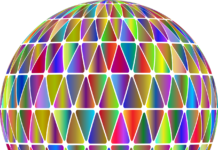A cable converter box, also known as a cable box or set-top box, is a device that converts the analog or digital cable television signal into a format that can be displayed on a television screen. It serves as an intermediary between the cable service provider’s signal and the television, enabling users to access and view cable television channels. Cable converter boxes are typically provided by cable service providers to their subscribers and are an essential component of a cable television setup.
1. Functionality: A cable converter box is primarily responsible for decoding and converting the cable television signal into a format that can be displayed on a television. It performs various functions such as decrypting encrypted channels, tuning to specific channels, and providing an on-screen program guide.
2. Signal Reception: Cable converter boxes receive the incoming cable signal from the service provider. This signal can be delivered via coaxial cables or through a digital signal over the internet (IPTV). The box acts as a receiver, ensuring that the signal is properly received and processed for display on the TV.
3. Decoding and Conversion: Cable boxes are equipped with the necessary hardware and software to decode the incoming signal. They can handle different encoding formats such as MPEG-2 or MPEG-4, depending on the cable provider’s infrastructure. The decoded signal is then converted into a format compatible with the user’s television, such as HDMI, composite, or component video.
4. Channel Selection: Cable converter boxes enable users to select channels from the available cable lineup. This can be done using a remote control or through an on-screen menu. The box communicates with the cable service provider to tune to the desired channel and retrieve the corresponding video and audio data.
5. Interactive Program Guide: Many cable boxes feature an interactive program guide (IPG) that provides a listing of available channels and program information. Users can navigate through the guide to browse schedules, view program descriptions, and set reminders or recordings for future shows. The IPG enhances the viewing experience by offering convenient access to program information.
6. Digital Video Recording (DVR): Some advanced cable converter boxes come with built-in DVR functionality. This allows users to record their favorite shows and movies onto a built-in hard drive or an external storage device. DVR features typically include the ability to pause, rewind, and fast-forward live TV, as well as schedule recordings for future broadcasts.
7. Video-On-Demand (VOD): Cable converter boxes with VOD capabilities offer access to on-demand content directly through the box. Users can browse a library of movies, TV shows, and other video content, selecting and playing their desired titles at their convenience. VOD services may be provided by the cable service provider or through partnerships with third-party streaming platforms.
8. Parental Controls: Cable boxes often incorporate parental control features, allowing users to restrict access to certain channels or program ratings. This feature is particularly useful for parents who want to regulate the content their children can view. By setting up a PIN or password, users can prevent unauthorized access to restricted content.
9. Interactive Services: Some cable converter boxes support interactive services, which can include features like gaming, shopping, weather updates, and news headlines. These services utilize the box’s internet connectivity or a dedicated data channel to provide additional content and functionality beyond traditional television channels.
10. High-Definition (HD) and Ultra-High Definition (UHD) Support: As television technology has advanced, so has the capability of cable converter boxes. Many modern boxes support high-definition resolutions (720p, 1080i, or 1080p) and even ultra-high-definition resolutions (4K or 8K). This allows viewers to enjoy a higher level of visual detail and clarity when watching compatible content.
A cable converter box serves as the bridge between the cable service provider’s signal and the user’s television. It decodes and converts the cable signal, provides channel selection, offers an interactive program guide, and may include additional features like DVR, VOD, parental controls, interactive services, and support for high-definition and ultra-high-definition resolutions. Cable converter boxes enhance the television viewing experience by providing a range of functionalities and features beyond traditional broadcast channels.
In addition to its primary functions, a cable converter box often acts as a central hub for managing various aspects of the user’s cable television experience. Users can control the box and navigate through its features using a dedicated remote control, which typically includes buttons for channel selection, volume control, and menu navigation.
One of the key features found in many cable converter boxes is the interactive program guide (IPG). The IPG provides users with an intuitive and user-friendly interface to browse through the available channels and program schedules. It displays program information such as show titles, episode descriptions, start times, and even allows users to set reminders or schedule recordings for their favorite shows.
For those who want to take their television viewing experience to the next level, some cable converter boxes offer built-in digital video recording (DVR) capabilities. With DVR functionality, users can easily record their preferred shows and movies for later viewing. They can pause, rewind, and fast-forward through recorded content, giving them the flexibility to watch TV on their own terms.
Furthermore, many cable converter boxes provide access to video-on-demand (VOD) services. This feature allows users to access a vast library of on-demand content, including movies, TV series, and special programming. With VOD, viewers have the freedom to choose what they want to watch and when they want to watch it, without being limited by broadcast schedules.
Another important aspect of cable converter boxes is their ability to provide parental controls. These controls allow users, particularly parents, to restrict access to certain channels or program ratings. By setting up a personal identification number (PIN) or password, parents can ensure that their children only have access to age-appropriate content, giving them peace of mind while their kids enjoy their favorite shows.
Additionally, cable converter boxes can offer interactive services that go beyond traditional television programming. These services may include interactive games, shopping applications, weather updates, news headlines, and even social media integration. Users can access these services directly through their cable box, making it a versatile and multi-functional device.
It’s worth noting that as technology continues to advance, cable converter boxes are keeping pace. Many modern boxes are designed to support high-definition (HD) and ultra-high-definition (UHD) resolutions. This means that users can enjoy stunning visual clarity and detail when watching content that is broadcast or streamed in these formats. With compatible televisions, viewers can immerse themselves in a truly cinematic experience from the comfort of their own homes.
In conclusion, a cable converter box is an essential component of a cable television setup, bridging the gap between the cable service provider and the user’s television. It decodes and converts the cable signal, provides channel selection, interactive program guides, and may offer additional features such as DVR, VOD, parental controls, interactive services, and support for high-definition and ultra-high-definition resolutions. With its diverse range of functionalities, a cable converter box enhances the television viewing experience, offering users more control, convenience, and entertainment options.






















